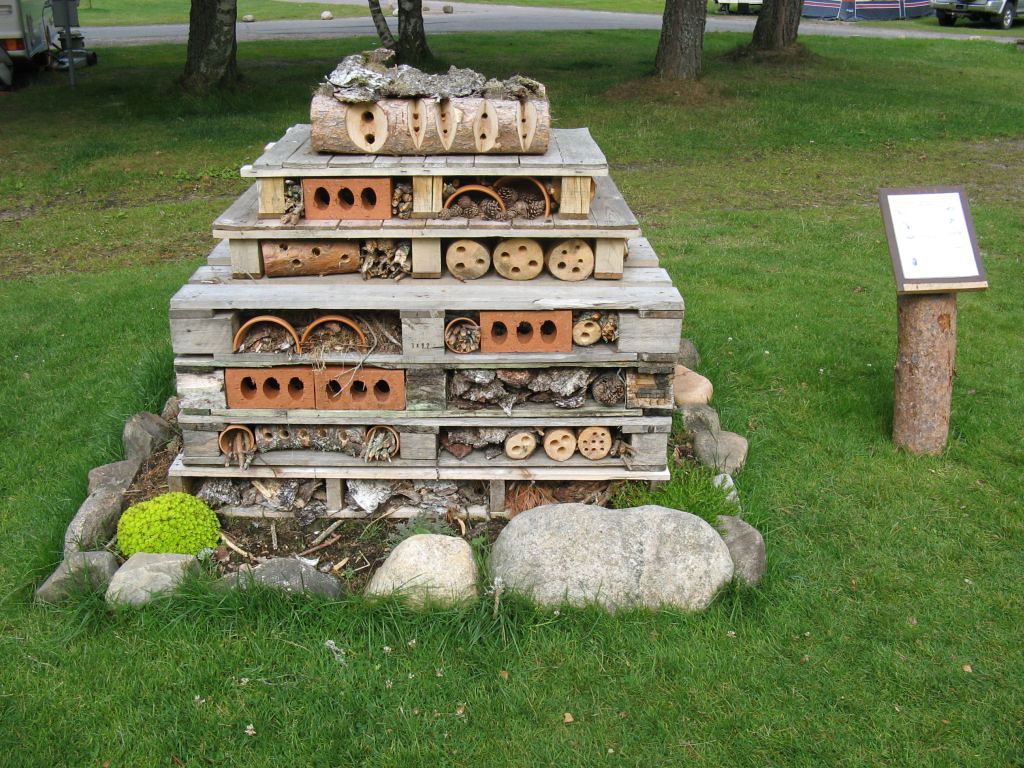Tucked away in garden corners and nestled among native plants, bug hotels have emerged as charming yet powerful tools for conservation-minded homeowners. These structures—essentially artificial habitats made from natural materials—provide essential shelter for beneficial insects that pollinate our gardens, control pests naturally, and contribute to local ecosystem health. By building a bug hotel, you’re not merely creating a decorative garden feature; you’re actively participating in local conservation efforts, turning your backyard into a sanctuary for the small creatures that form the backbone of healthy ecosystems. The beauty of bug hotels lies in their simplicity: they can be constructed from recycled and natural materials, customized to your space, and designed to attract specific beneficial insects that enhance your garden’s productivity while boosting local biodiversity.
Understanding the Importance of Beneficial Insects
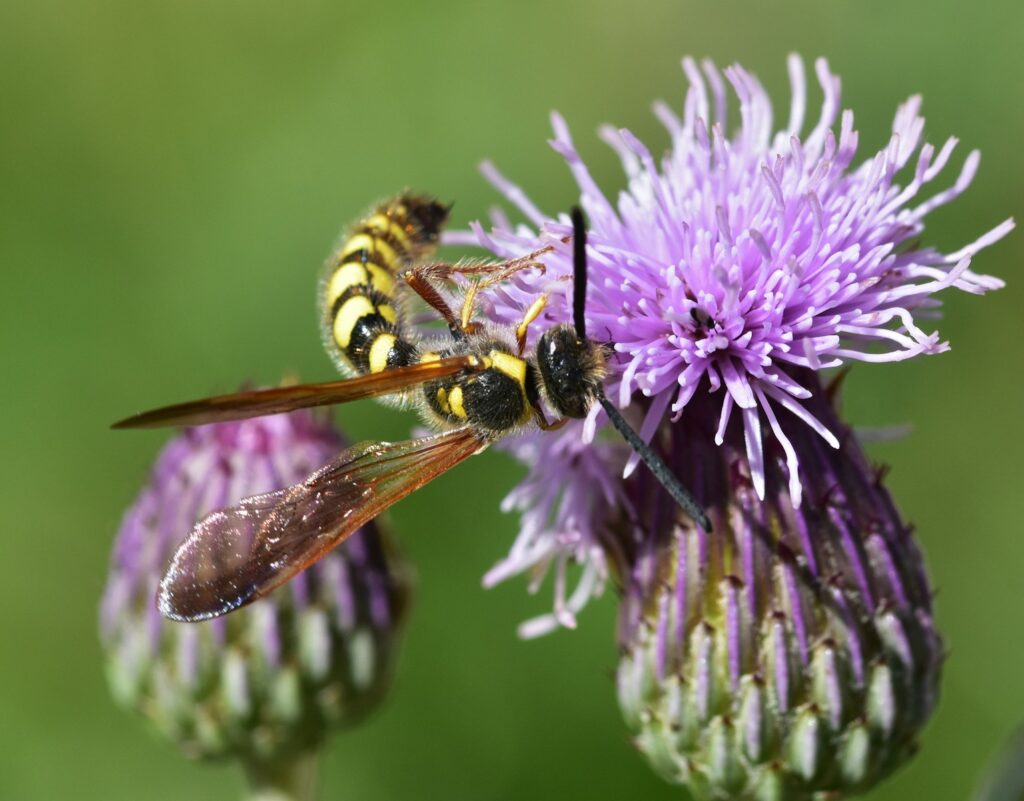
Beneficial insects form the often-invisible workforce that keeps our gardens and ecosystems functioning properly. Pollinators like native bees, butterflies, and hoverflies ensure that flowers transform into fruits and vegetables, with research showing that nearly 80% of flowering plants depend on animal pollinators. Predatory insects such as ladybugs, ground beetles, and parasitic wasps act as natural pest control, helping to keep problematic insect populations in check without chemical interventions. Decomposers including woodlice and certain beetles break down dead plant material, recycling nutrients back into the soil and improving garden fertility. Unfortunately, these essential insects face multiple threats including habitat loss, pesticide use, and climate change, making artificial habitats like bug hotels increasingly important for their survival.
Planning Your Bug Hotel: Location and Size Considerations

The success of your bug hotel begins with thoughtful placement that considers both insect preferences and garden aesthetics. Most beneficial insects prefer locations that receive morning sun but offer afternoon shade, keeping the hotel at ideal temperatures without overheating. Position your hotel facing south or southeast in northern hemisphere gardens to maximize gentle sunlight exposure, while ensuring it’s protected from strong winds and driving rain that could damage the structure or harm its inhabitants. Consider the size carefully—while impressive multi-story hotels can accommodate more diversity, even small structures the size of a birdhouse can provide valuable habitat when properly designed. Keep your hotel within viewing distance of a window or garden seating area to enjoy observing the insect activity, but far enough from areas with high human traffic to avoid disturbance.
Essential Materials for Bug Hotel Construction

The beauty of bug hotel construction lies in utilizing simple, often recycled materials that would otherwise be discarded. For the outer frame, consider repurposing wooden pallets, old shelving units, or building a simple box frame from untreated lumber—avoiding pressure-treated wood which contains chemicals harmful to insects. Natural filling materials should comprise the bulk of your hotel, including pine cones, tree bark, hollow stems from plants like bamboo or reeds, dried leaves, straw, and small branches with varying thicknesses. Drilled hardwood blocks with holes of different diameters (2-10mm) create perfect nesting spaces for solitary bees, while cardboard tubes, rolled corrugated cardboard, or paper straws offer alternative nesting options. For protection against the elements, incorporate roofing materials such as terracotta tiles, slate pieces, or reclaimed wooden shingles, ensuring proper overhang to keep the interior relatively dry during rain.
Designing a Multi-Chamber Structure
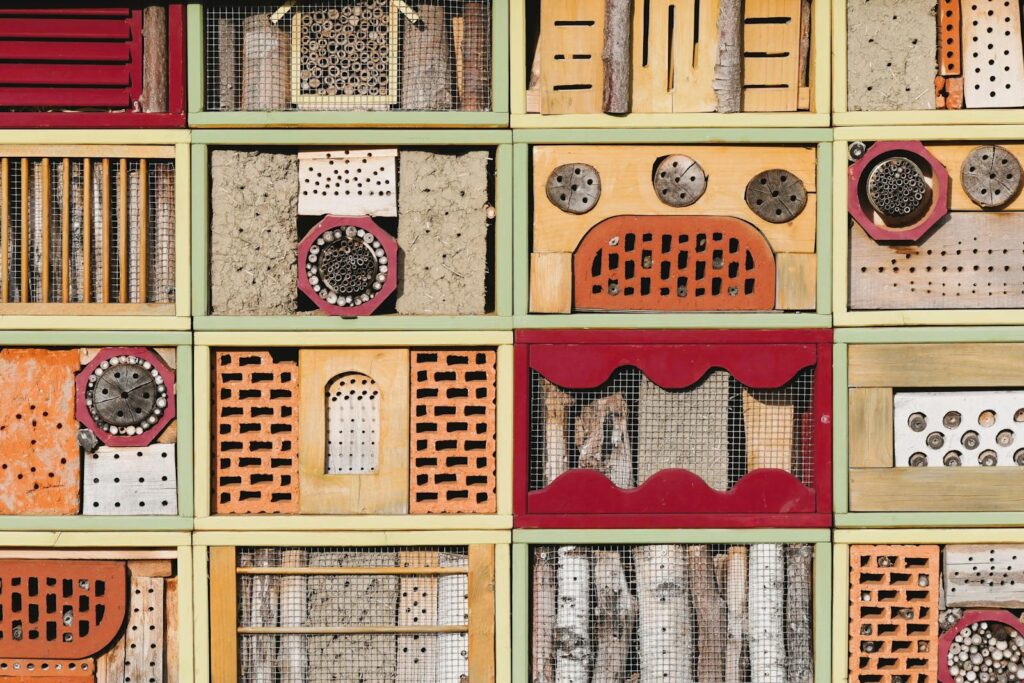
Effective bug hotels feature multiple specialized chambers that cater to different insect preferences and life-cycle needs. Create distinct sections within your hotel, each filled with different materials to attract diverse species—dense bundles of hollow stems for solitary bees, loose bark and wood pieces for beetles and centipedes, and dry leaves and straw for lacewings and earwigs. Vary the size of cavities throughout your hotel, from tiny crevices between stacked materials for smaller insects to larger spaces that accommodate creatures like toads that prey on garden pests. Incorporate some chambers with soil or sand mixtures to provide habitat for ground-nesting insects, while keeping other chambers dry with good drainage for species that require less humidity. Remember to arrange chambers logically, with heavier materials at the bottom for stability and lighter materials toward the top, while ensuring that each section remains accessible to its intended residents.
Creating Specialized Habitats for Key Pollinators

Solitary bees, which comprise approximately 90% of bee species and rarely sting, require specific accommodations different from honeybees. For these essential pollinators, drill holes ranging from 2mm to 10mm in diameter into blocks of preservative-free hardwood, ensuring each hole is smooth inside, closed at one end, and between 4-8 inches deep. Mason bees particularly benefit from tubes made from hollow plant stems like bamboo, cut to 6-8 inch lengths and bundled together with the closed nodes at the back. Butterflies appreciate narrow vertical crevices for overwintering, which can be created by stacking thin pieces of bark or weathered wood with small spaces between them. Hoverflies, whose larvae are voracious aphid predators, favor damp habitats with rotting wood and leaf litter, making them perfect residents for lower, slightly moister sections of your bug hotel.
Supporting Natural Pest Controllers
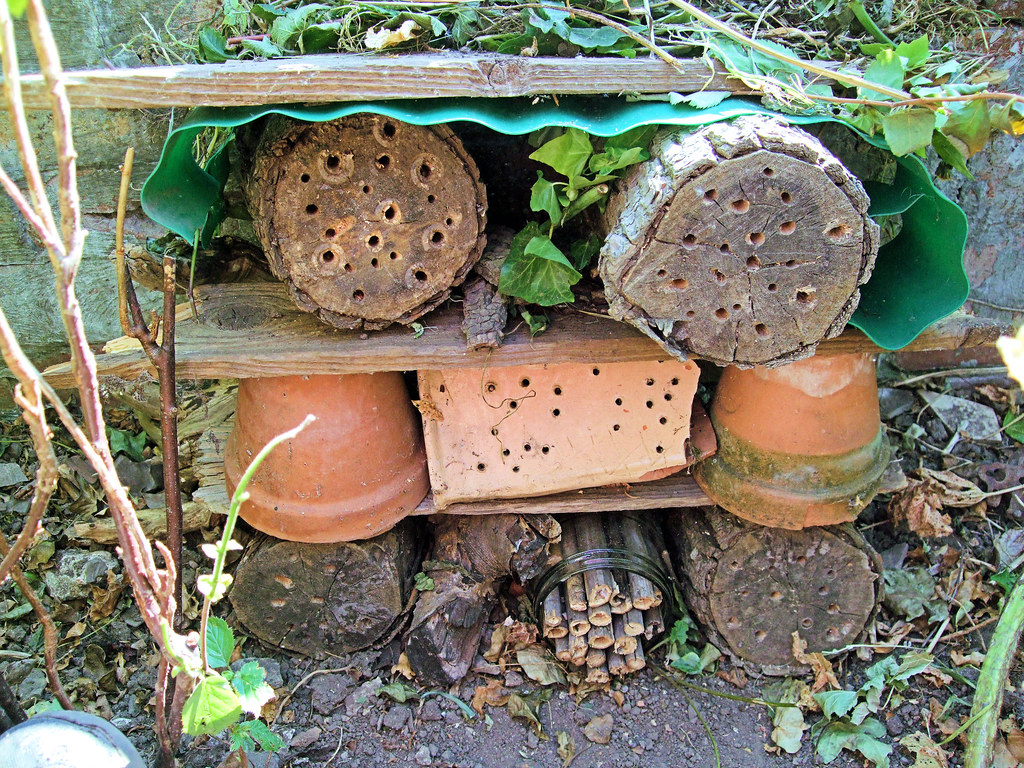
Ladybugs, nature’s aphid control specialists, benefit from chambers filled with dry leaves, straw, and small twigs where they can hibernate during winter months before emerging in spring to feast on garden pests. Lacewings, whose larvae can each consume up to 500 aphids, prefer narrow slits or specialized chambers filled with straw or corrugated cardboard where they can overwinter safely. Ground beetles, which patrol garden soil at night hunting slugs, cutworms, and other destructive pests, appreciate sections with loose bark, stones, and logs at ground level that mimic their natural habitat under forest debris. Parasitic wasps, tiny non-stinging insects that lay eggs in pest insects like caterpillars and aphids, benefit from small-diameter tubes (1-3mm) made from hollow plant stems or drilled holes in wood blocks, providing crucial nesting sites for these microscopic garden allies.
Step-by-Step Construction Guide
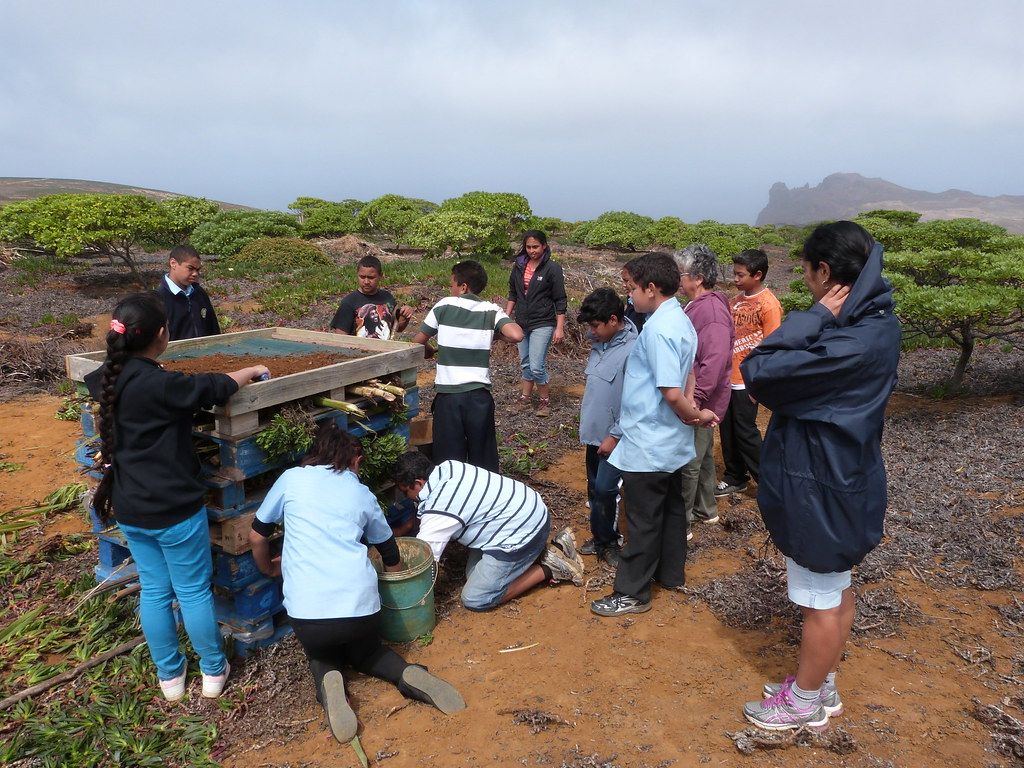
Begin your bug hotel project by assembling your frame, whether it’s a repurposed wooden pallet standing on its side, a custom-built wooden box, or stacked bricks with spaces for filling materials. Create distinct compartments within your frame using additional wooden planks, bricks, or logs positioned to divide the space into multiple chambers of varying sizes. Fill each compartment with your prepared materials, arranging them with purpose—bamboo tubes and drilled wood blocks should be positioned horizontally with their openings facing outward and slightly downward to prevent rain from entering, while loose materials like pinecones and bark should be packed firmly enough to stay in place but not so tightly that insects cannot navigate between them. Finally, attach your chosen roof material with an overhang to protect the hotel from excessive moisture, ensuring it’s securely fastened to withstand wind while remaining removable for future maintenance.
Simple Beginner Projects

For those new to bug hotel construction, start with a basic bamboo bundle by gathering 15-20 hollow bamboo stems cut to 6-8 inch lengths, ensuring each piece has one end closed by a natural node. Tightly bundle these stems together using garden twine or wire, positioning them with the open ends facing slightly downward, and hang the bundle on a sunny fence or wall at least 3-4 feet above ground. Another beginner-friendly option is a drilled wood block hotel, created by drilling multiple holes of varying diameters (2-10mm) about 3-5 inches deep into a preservative-free hardwood block, then mounting it horizontally in a sheltered, sunny location. For the most straightforward approach, repurpose a clean, empty plastic bottle by cutting off the top, filling it with rolled corrugated cardboard or bamboo tubes, and hanging it horizontally in a sheltered spot—this simple design particularly appeals to solitary bees and takes less than 15 minutes to create.
Advanced Design Elements
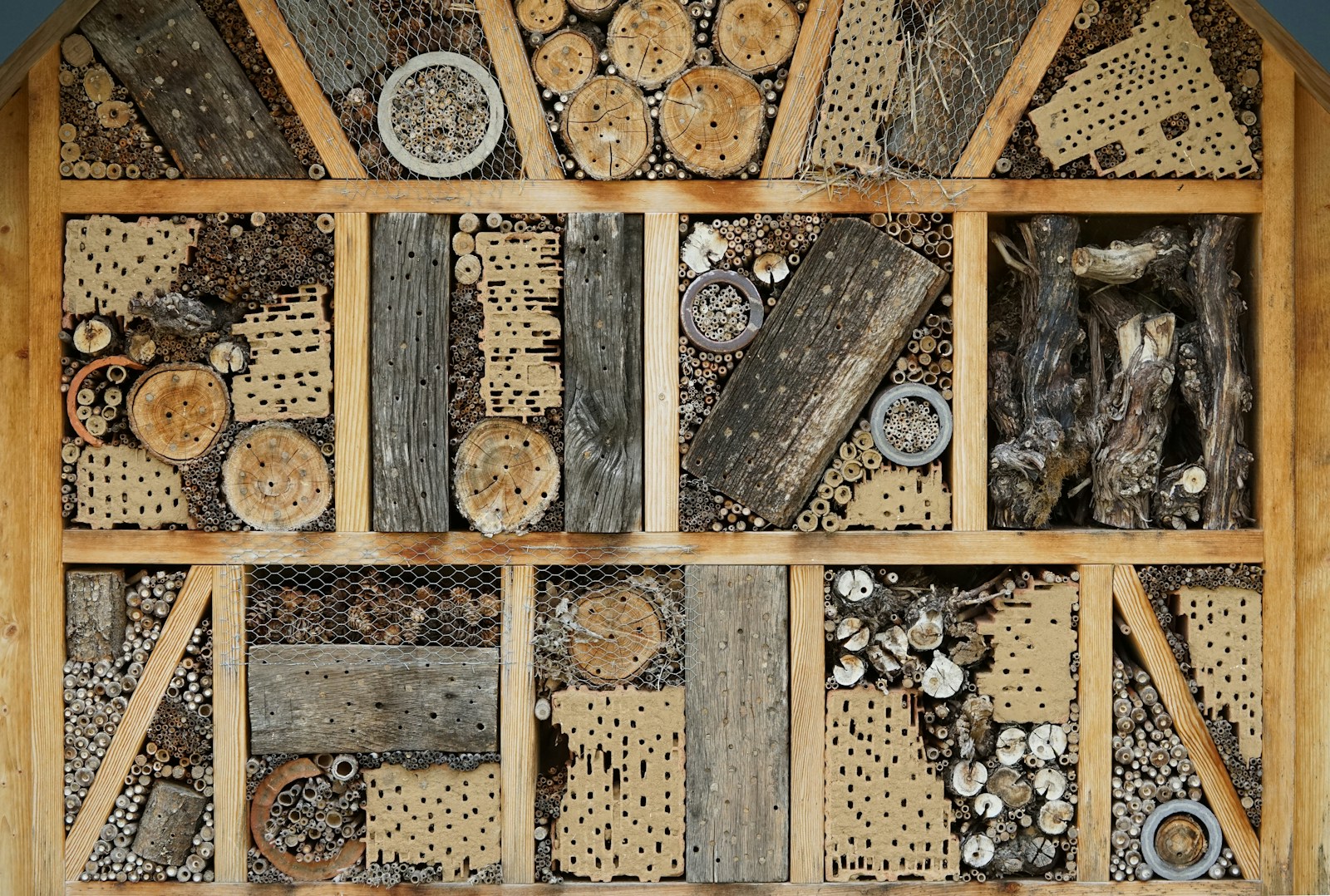
Elevated bug hotels benefit from living roofs planted with sedum, wild thyme, or other low-maintenance native plants that provide additional nectar sources while improving insulation and aesthetics. Incorporate monitoring features like viewing windows made from clear acrylic sheets positioned between wooden frames, allowing observation of insect activity without disturbing the hotel’s inhabitants. For comprehensive habitat support, integrate water sources by embedding shallow dishes or natural depressions filled with pebbles and water near your hotel, ensuring insects have access to moisture without drowning risk. The most sophisticated designs include strategic “satellite” mini-hotels positioned throughout the garden, creating a network of habitats connected by insect-friendly plantings that maximize the effective range of beneficial insects while reducing predation pressure on any single structure.
Surrounding Plantings to Enhance Effectiveness
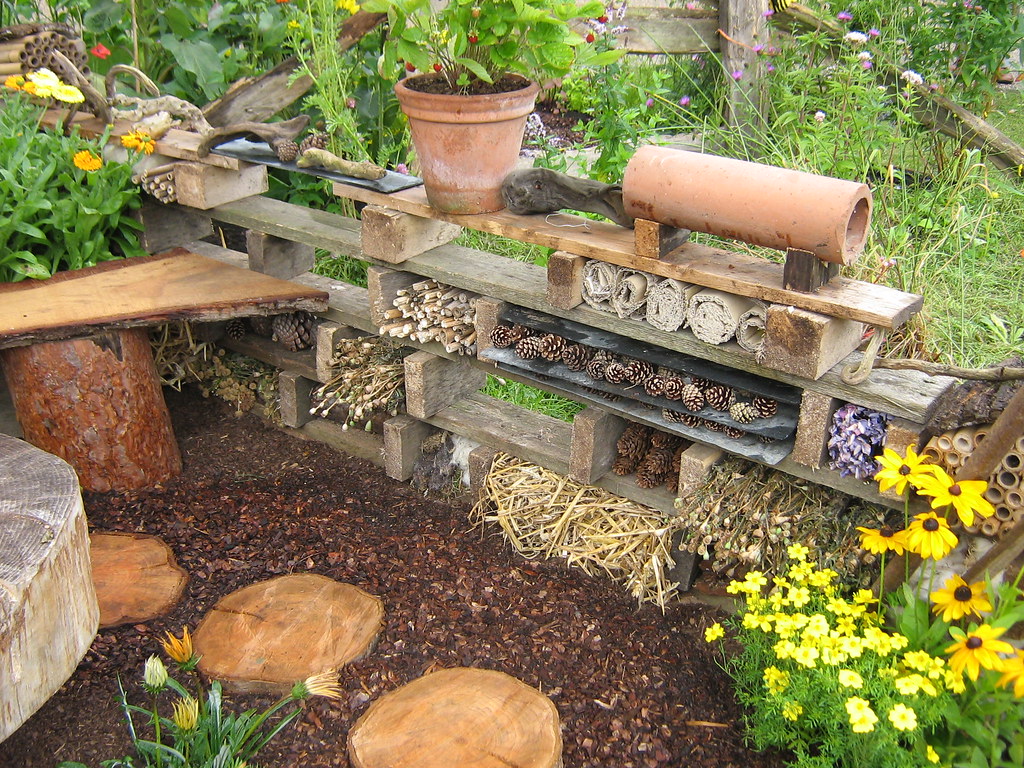
The success of your bug hotel depends significantly on surrounding it with appropriate native plants that provide food and additional habitat. Plant nectar-rich flowers like echinacea, lavender, and native wildflowers in clusters near your hotel, ensuring continuous blooming from early spring through late fall to support pollinators throughout their active seasons. Include plants with hollow or pithy stems such as elderberry, raspberry, or native grasses that provide natural nesting sites complementing your constructed habitat. Incorporate “insectary plants” like dill, fennel, and yarrow that specifically host beneficial predatory insects during their larval stages, creating a self-sustaining pest management system. Remember to avoid using pesticides anywhere near your bug hotel or surrounding garden, as even organic formulations can harm beneficial insects and undermine the ecological benefits your hotel aims to provide.
Maintenance and Seasonal Care
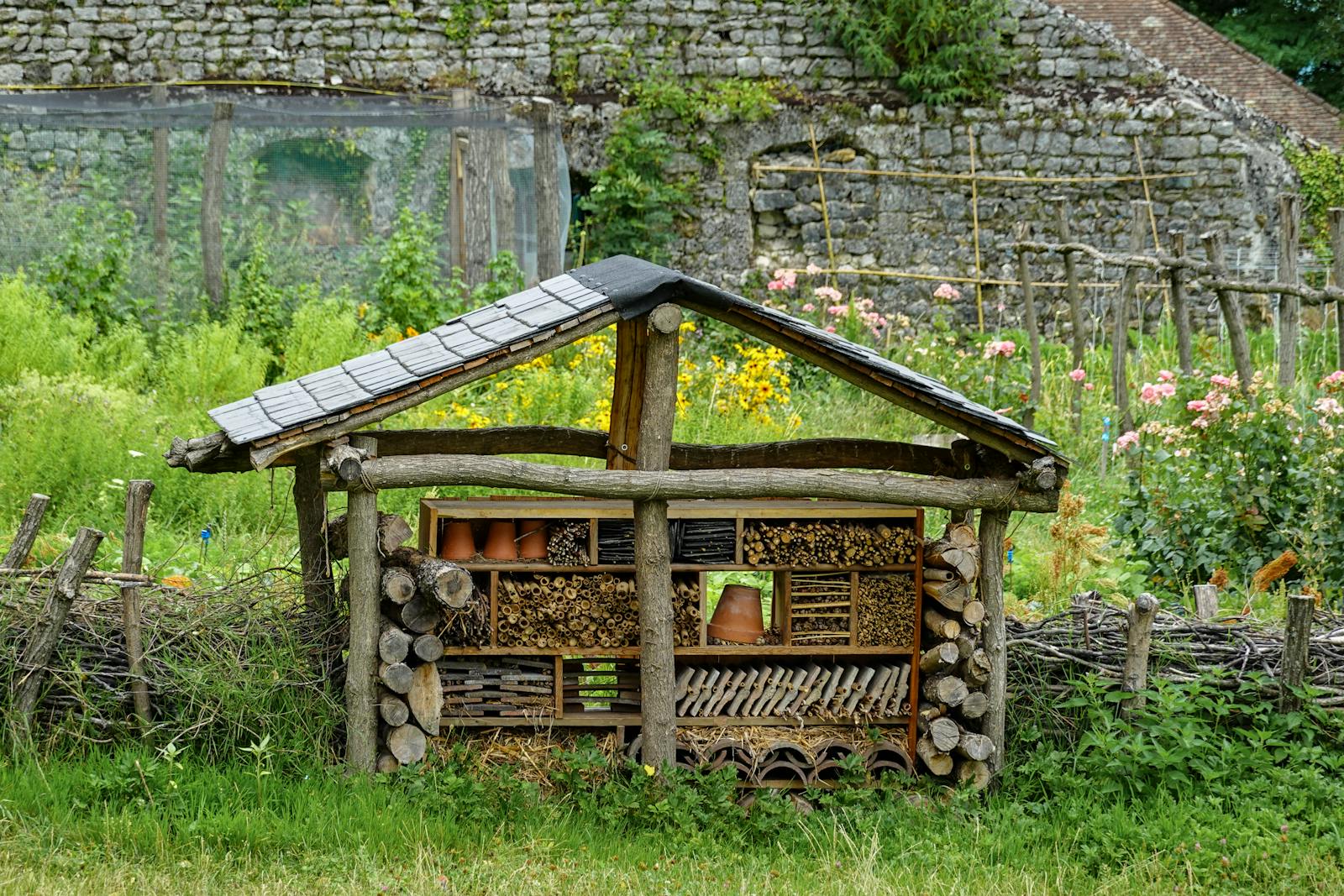
Bug hotels require minimal but important seasonal maintenance to remain effective habitats year after year. Each spring, gently clear away any obvious debris or spider webs that might block entrance holes while being careful not to disturb any overwintering insects that may still be present. Check for and repair structural issues like loose materials or water damage annually, preferably in late summer when most insects have completed their breeding cycles. Consider replacing approximately one-third of nesting materials like bamboo tubes or drilled blocks every two to three years to prevent buildup of parasites or disease while maintaining sufficient habitat availability. During extreme weather events, provide additional protection if needed—covering the hotel with breathable burlap during unusually cold winters or providing shade during exceptional heat waves—while otherwise allowing the hotel to function naturally with minimal intervention.
Monitoring Success and Insect Identification

Documenting the insects that visit and inhabit your hotel provides valuable data while enhancing your connection to local biodiversity. Keep a simple journal noting when different species appear, which hotel sections they prefer, and any notable behaviors, supplementing your observations with photographs when possible. Look for evidence of successful nesting, such as sealed bamboo tubes or holes in drilled wood (indicating occupied solitary bee nests) or the presence of insect eggs, larvae, or pupae in various hotel sections. Utilize citizen science platforms like iNaturalist or Bumble Bee Watch to identify the species visiting your hotel while contributing to scientific understanding of insect populations in your region. Consider installing a simple wildlife camera focused on your bug hotel to capture activity during times when you’re not actively observing, providing insights into nocturnal visitors and shy species that might otherwise go unnoticed.
Educational Opportunities for Children
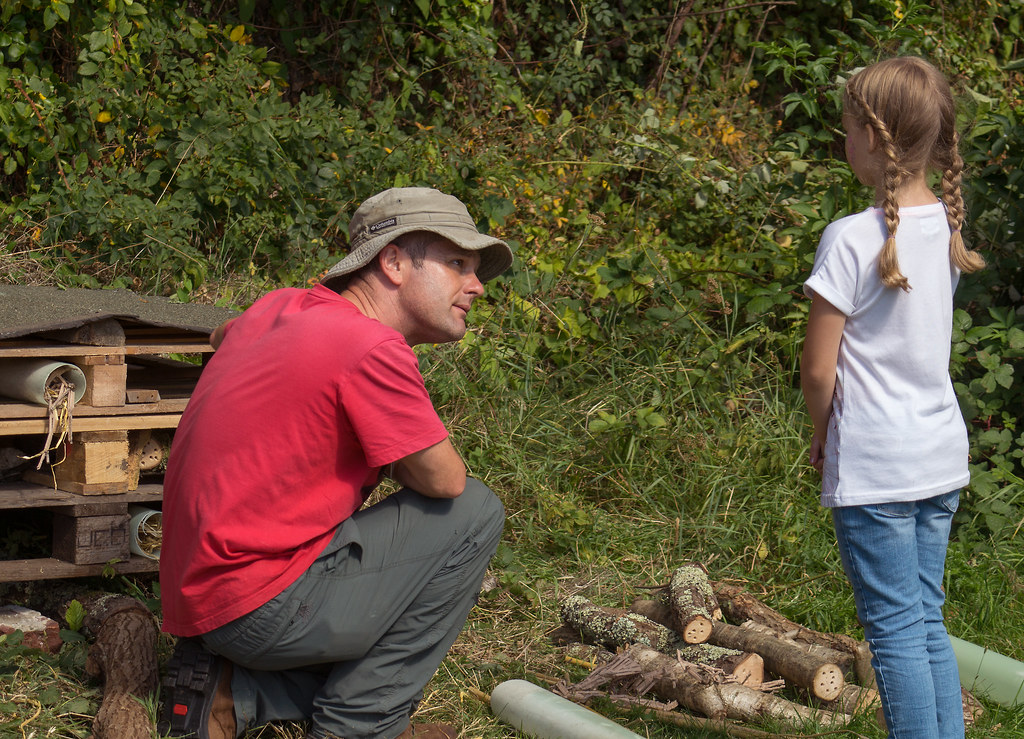
Bug hotels offer exceptional educational opportunities for children, connecting them with nature while teaching ecological concepts through hands-on experience. Involve children in the construction process by assigning age-appropriate tasks like gathering pine cones, bundling bamboo stems, or decorating the hotel’s exterior with non-toxic paint or natural materials. Create a simple identification guide with pictures of common beneficial insects they might observe, encouraging regular “bug hotel checks” where children can document visitors in their own nature journals using drawings or simple descriptions. Incorporate learning extensions by researching the life cycles of hotel inhabitants, understanding their ecological roles, or calculating the pest control value of beneficial insects like ladybugs that can each consume thousands of aphids during their lifetime. For school gardens or nature clubs, establish a bug hotel maintenance team with rotating responsibilities, fostering both environmental stewardship and collaborative skills while ensuring the habitat remains effective.
Conclusion
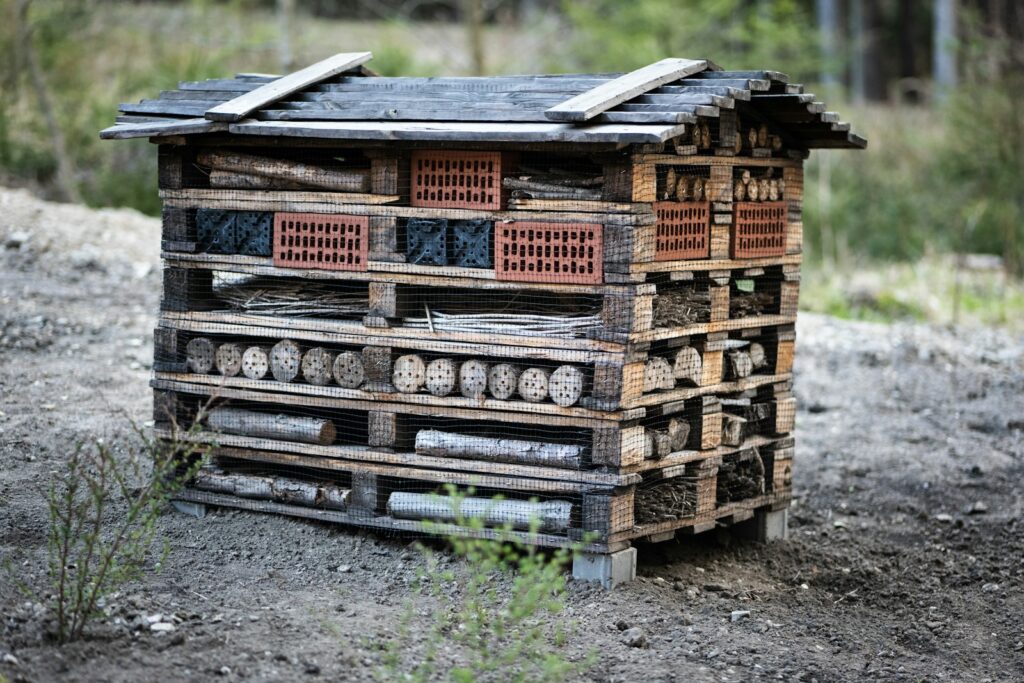
Creating a bug hotel transforms a simple garden project into a powerful act of ecological restoration. By providing essential habitat for beneficial insects, you’re not only enhancing your garden’s productivity through improved pollination and natural pest control, but also creating a stepping stone for biodiversity in increasingly fragmented urban and suburban landscapes. The materials are simple, the construction straightforward, but the impact is profound—each bug hotel, however modest, helps sustain the often-overlooked insect populations that form the foundation of healthy ecosystems. As your hotel welcomes its first residents, take time to observe the intricate relationships unfolding within its chambers, connecting your garden to the wider web of life and reminding us that conservation begins in our own backyards.

